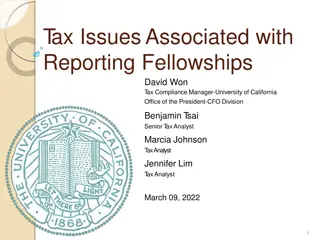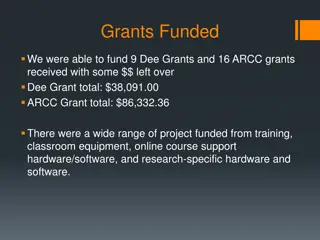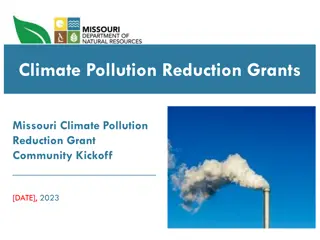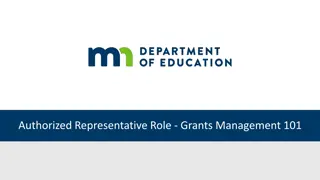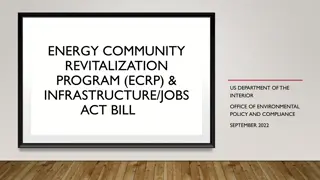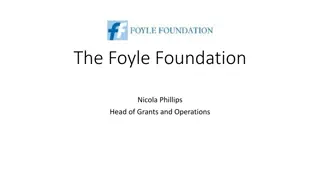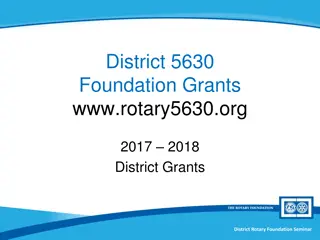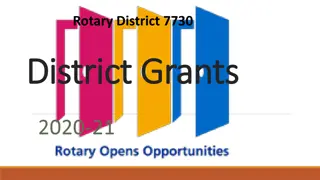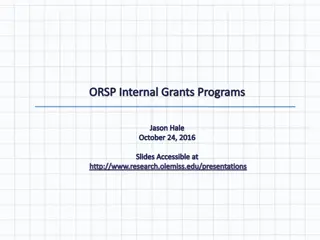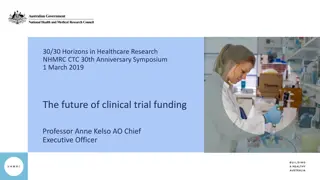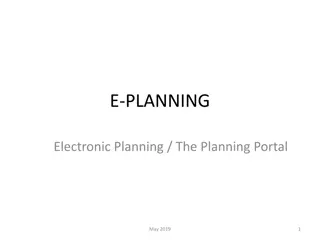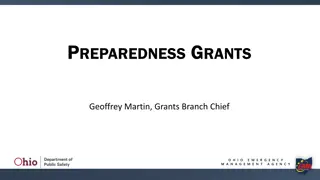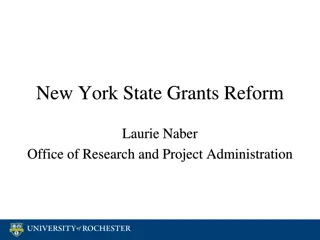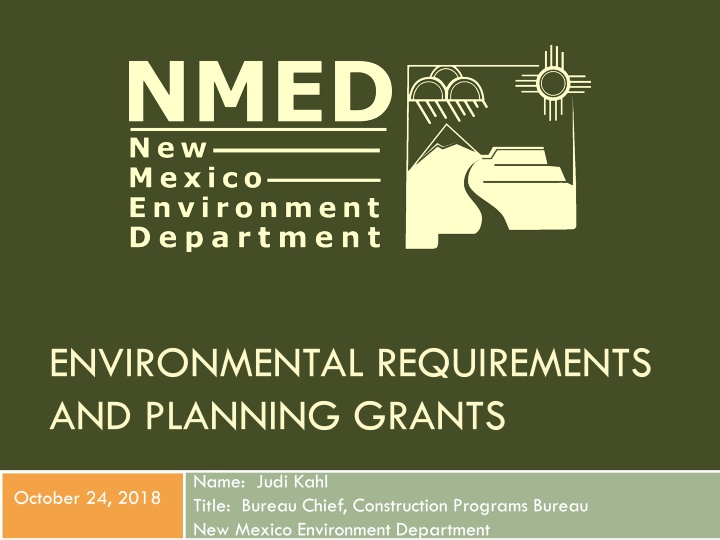
Environmental Requirements and Planning Grants Overview
This document provides an overview of environmental requirements and planning grants, focusing on federal funding, types of environmental clearance, and specific processes like Categorical Exclusion (CE) and Environmental Assessment (EA) within the context of the New Mexico Environment Department. It explains the necessary steps and documentation needed for projects to meet environmental standards and move forward with funding approval.
Download Presentation

Please find below an Image/Link to download the presentation.
The content on the website is provided AS IS for your information and personal use only. It may not be sold, licensed, or shared on other websites without obtaining consent from the author. If you encounter any issues during the download, it is possible that the publisher has removed the file from their server.
You are allowed to download the files provided on this website for personal or commercial use, subject to the condition that they are used lawfully. All files are the property of their respective owners.
The content on the website is provided AS IS for your information and personal use only. It may not be sold, licensed, or shared on other websites without obtaining consent from the author.
E N D
Presentation Transcript
ENVIRONMENTAL REQUIREMENTS AND PLANNING GRANTS Name: Judi Kahl Title: Bureau Chief, Construction Programs Bureau New Mexico Environment Department October 24, 2018
Overview of Environmental Documents 2 Federal funding requires National Environmental Policy Act (NEPA) clearance i.e. Environmental Clearance Type of document required depends on the source of the funding and the type of project Agency that provides the funding has specific requirements that must be met to utilize the funding CWSRF, USDA, CDBG, DWSRF, all have slightly different requirements.
Types of Environmental Clearance 3 Categorical Exclusion (CE) simple upgrade or replacement of existing facilities. Environmental Assessment (EA) and Finding of No Significant Impact (FNSI) more complex project requiring more intense research and analysis. Environmental Impact Statement (EIS) and Record of Decision (ROD) Highest level of analysis reserved for the most complex type of projects with the most potential for impacts from the project.
Categorical Exclusion (CE) - CWSRF 4 Simplest projects may be covered under a categorical exclusion. Allowable projects must meet requirements that are determined using a checklist. Minor improvements, replacements, and functional replacement of equipment only. Does not only mean that the area is previously disturbed . Must also not increase capacity of what is being updated or replaced by more than 30%. CE is published and if no comments received becomes final in 30 days.
EA and FONSI - CWSRF 5 NMED CPB has EPA approved State Environmental Review Process (SERP) SERP outlines the required documentation to be provided in the form of an Environmental Information Document (EID) EID includes project description and alternatives discussion from PER. EID also includes biological and archeological surveys of proposed area for project. EID includes consultation with state and federal agencies, and Tribes about the project.
EA and FONSI - CWSRF 6 NMED CPB uses EID information to draft an environmental assessment (EA) and preliminary FONSI if EID demonstrates the project qualifies. EA and FONSI are put out for public comment for 30 days. If comments are received they must be addressed and the EA revised and FONSI revised as applicable. If no comments are received that require changes the FONSI is finalized and project can proceed.
Environmental Impact Statement (EIS) and Record of Decision (ROD) 7 Agencies prepare an Environmental Impact Statement (EIS) if a proposed major federal action is determined to significantly affect the quality of the human environment. The regulatory requirements for an EIS are more detailed and rigorous than the requirements for an EA. The CWSRF in New Mexico has not been required to do an EIS to date.
Local Government Planning Fund Planning Grants NMFA 8 Maximum amount per planning document is $50,000 and per entity $100,000 in 24 months. Can fund preliminary engineering reports, environmental information documents, economic development plans, water conservation plans, asset management plans, etc. Applications accepted monthly. Applicant must meet thresholds within 5 months of approval including approval of consultant, approval of contract and scope of plan and evidence of local match if applicable.
Local Government Planning Fund Planning Grants - NMFA 9 Document is reviewed by the appropriate agency as outlined in NMFA project management policies. Document must be submitted for review no later than 12 months from the date of the grant approval by the NMFA board. Funding i.e. payment is made after the document is approved by the agency designated by NMFA no later than 18 months from NMFA Board approval. Payment is in one lump sum upon document approval.

